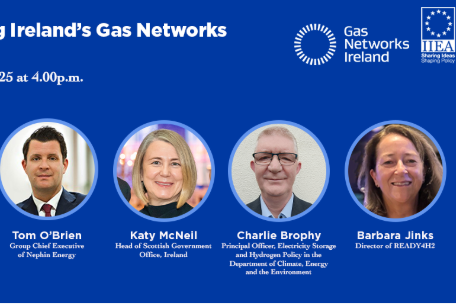


The Institute of International and European Affairs (IIEA), in partnership with Gas Networks Ireland, convened a conference last week to discuss the transformation of Ireland’s gas infrastructure to assist with the country’s 2050 net-zero carbon ambitions.
The hybrid event brought together policymakers and industry leaders to discuss the role of green gases - hydrogen and biomethane – in developing a resilient, low-carbon future energy system. The panel consisted of speakers from Gas Networks Ireland, Nephin Energy, the Scottish Government, Ireland’s Department of Climate, Energy and the Environment and Ready4H2 (Director Barbara Jinks).
In Ireland, biomethane is poised as the priority replacement fuel for buildings and heating where direct electrification is not possible, whilst hydrogen is expected to become crucial to replacing natural gas in the hard-to-decarbonise sectors. Both biomethane and hydrogen offer decarbonised alternatives whilst enhancing energy security and creating new economic opportunities; the upcoming Renewable Heating Obligation (in its final stage of drafting) will support an increased use of renewable energy in the heat sector with an additional key aim of reducing the island's reliance on imported fossil fuels (80% imported).
However, despite an abundance of biomass for biomethane production and vast amounts of wind energy for green hydrogen, participants acknowledged that the green gas market faces regulatory, infrastructure and investment hurdles, and it was acknowledged that customers often do not know what options are available to them with green gases.
The conference marked an important step in the dialogue in Ireland about the use of green gases for a cleaner and more secure energy future, and called for policy coordination and investment to unlock the full potential of Ireland’s green gases.